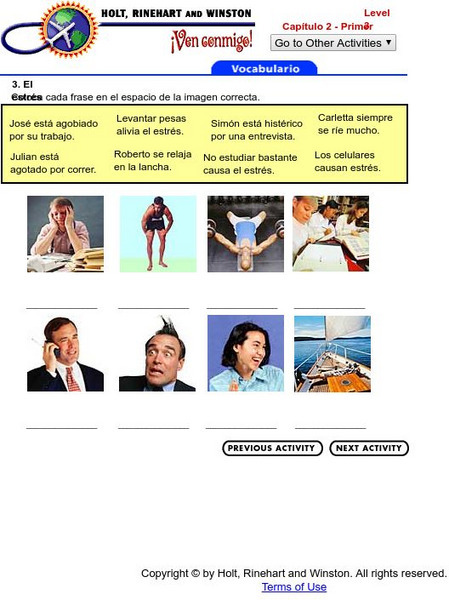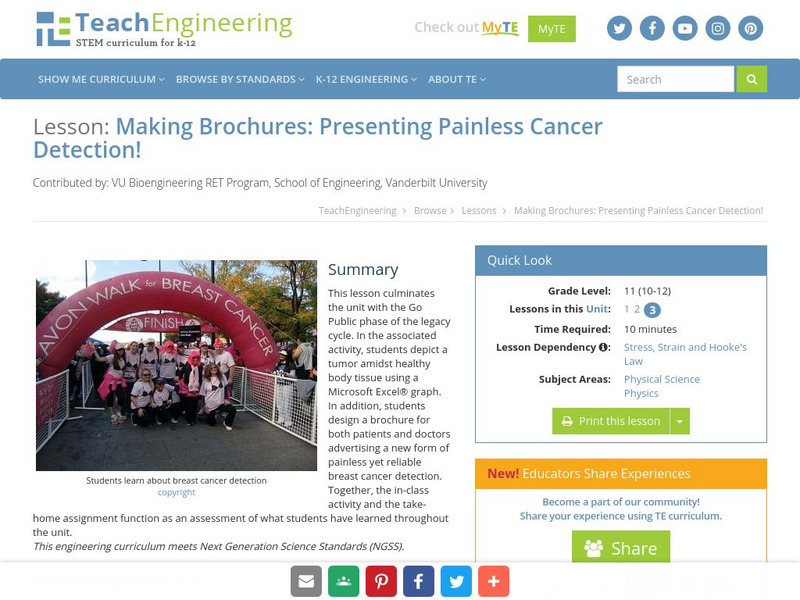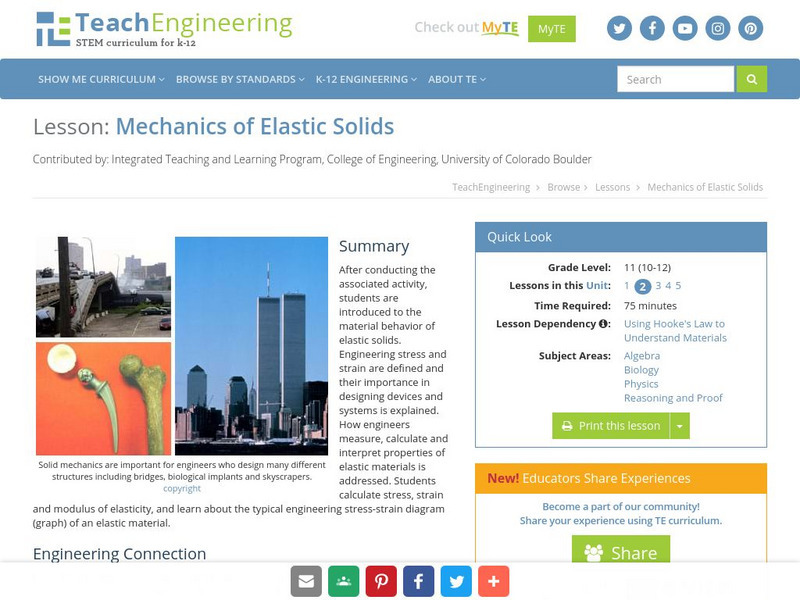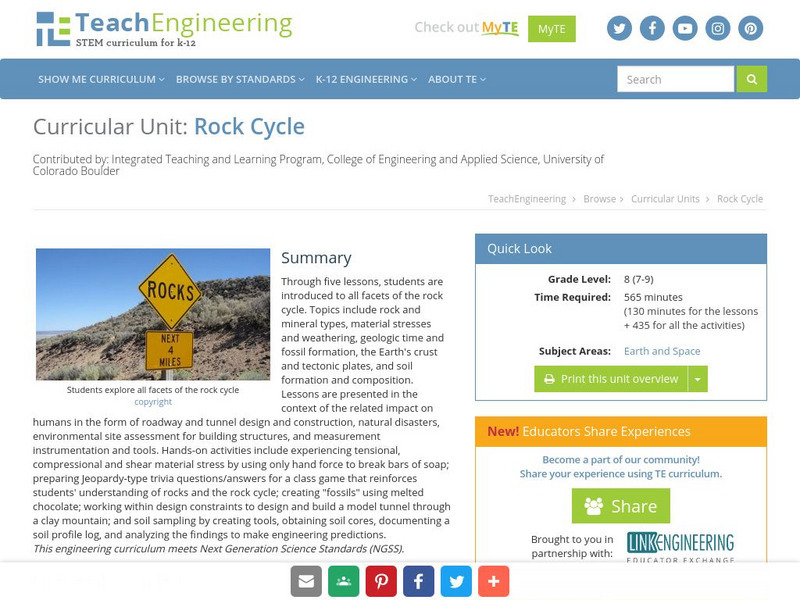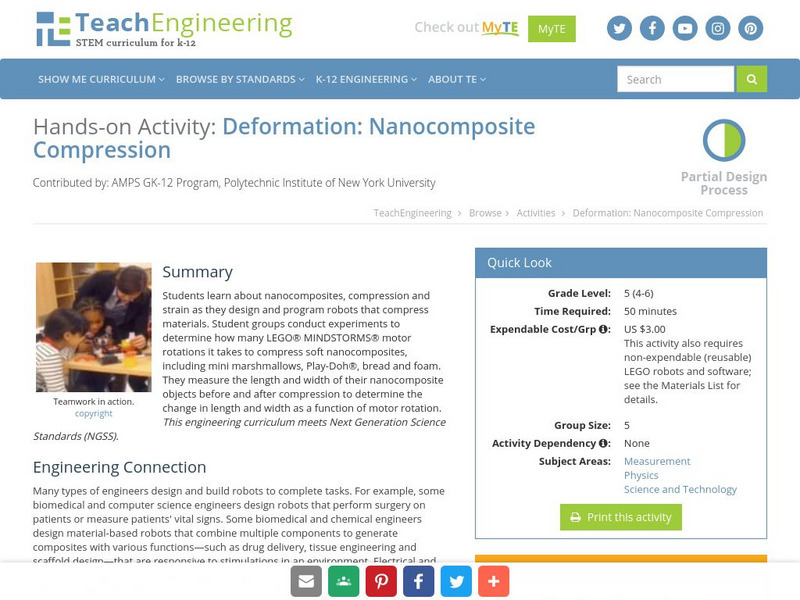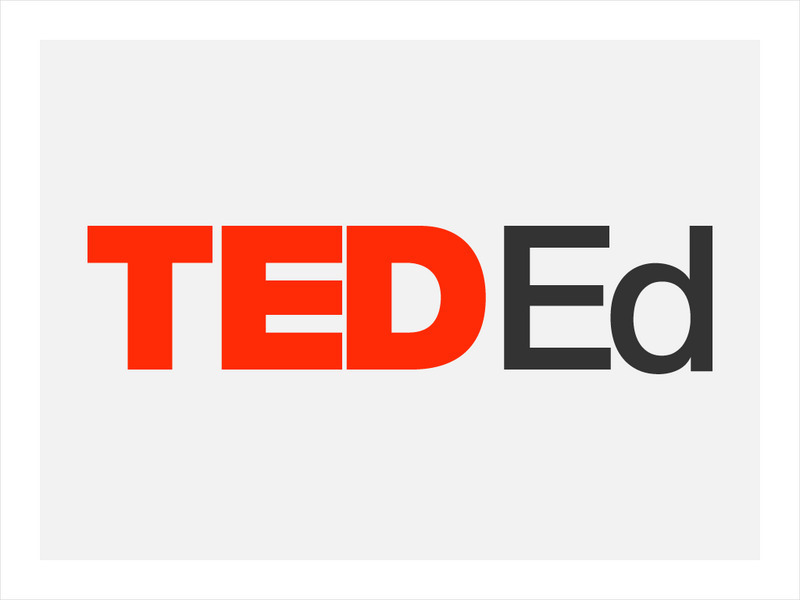TED Talks
Ted: Ted Ed: How Stress Affects Your Body
Our hard-wired stress response is designed to give us the quick burst of heightened alertness and energy needed to perform our best. But stress isn't all good. When activated too long or too often, stress can damage virtually every part...
TeachEngineering
Teach Engineering: Feel the Stress
Working individually or in groups, students explore the concept of stress (compression) through physical experience and math. They discover why it hurts more to poke themselves with mechanical pencil lead than with an eraser. Then they...
TeachEngineering
Teach Engineering: Stress, Strain and Hooke's Law
This lesson offers an introduction to Hooke's Law as well as stress-strain relationships. Students will first learn the governing equations. Then students will work through several example problems first individually, then as a class. In...
Georgia Department of Education
Ga Virtual Learning: Psychology: Stress and Health
Virtual learning unit on the theories of personality and the study of stress. Students will find a variety of engaging activities including a personality test, introvert/extrovert experiment, presentation, and video series in addition to...
Curated OER
Kids Health: Health Problems Series: Stress [Pdf]
The activities in this instructional activity unit can help students to learn more about what stress is and how to effectively manage it. After identifying stressors, they will keep a record of how they handled stressful situations that...
Other
Sounds of English: Word Stress
This tutorial practices pronunciation with emphasis on proper stress patterns. It can be copied for classroom use. Drawings help visualize how to pronounce certain sounds.
TeachEngineering
Teach Engineering: The Stress That You Apply
Students learn about contact stress and its applications in engineering. They are introduced to the concept of heavy loads, such as buildings, elephants, people and traffic, and learn how those heavy loads apply contact stress. Through...
TeachEngineering
Teach Engineering: You Be the Radiologist!
In addition to the associated lesson, this activity functions as a summative assessment for the Using Stress and Strain to Detect Cancer unit. In this activity, students will create a 1-D strain plot in Microsoft Excel depicting the...
Houghton Mifflin Harcourt
Holt, Rinehart and Winston: Ven Conmigo! El Estres, Capitulo 2
Spanish content; practice vocabulary and comprehension in this interactive matching exercise on the topic of stress.
Khan Academy
Khan Academy: Activity: Create Your Plan to Deal With Frustration
Follow the lead of Thinky Pinky on how to cope with frustrations. Complete the four-step plan with examples from Thinky Pinky to help you keep going when you want to give up!
PBS
Pbs Kids: Arthur Family Health: Resilience
A learning experience that provides some resources, activities, and videos to help you and your child cope and build resilience after a tragedy or a disaster.
TeachEngineering
Teach Engineering: Presenting Painless Breast Cancer Detection!
This lesson culminates the unit with the Go Public phase of the legacy cycle. In the associated activity, students must depict a tumor amidst healthy body tissue using a graph in Microsoft Excel. In addition, students will design a...
National Association of Geoscience Teachers
Serc: Modeling Glacier Dynamics With Flubber
This hands-on activity describes glacier mass balance in a changing climate. Students make a glacier, construct a glacier valley, then run several tests with different values for valley slope, "flubber" temperature, and basal conditions...
Other
Metamorphic Rocks [Ppt]
Explains the different ways that metamorphic rocks can form. Looks at high temperature, high pressure, and chemically active fluids. Discusses structures created in metamorphic rocks by different forces and the classifications based on...
TeachEngineering
Teach Engineering: Mechanics of Elastic Solids
After conducting the associated activity, students are introduced to the material behavior of elastic solids. Engineering stress and strain are defined and their importance in designing devices and systems is explained. How engineers...
TeachEngineering
Teach Engineering: Rock Cycle
Through five lessons, students are introduced to all facets of the rock cycle. Topics include rock and mineral types, material stresses and weathering, geologic time and fossil formation, the Earth's crust and tectonic plates, and soil...
TeachEngineering
Teach Engineering: Preconditioning Balloons
Students use balloons (a polymer) to explore preconditioning a viscoelastic material behavior that is important to understand when designing biomedical devices. They improve their understanding of preconditioning by measuring the force...
TeachEngineering
Teach Engineering: Deformation: Nanocomposite Compression
Students learn about nanocomposites, compression and strain as they design and program robots that compress materials. Student groups conduct experiments to determine how many LEGO MINDSTORMS NXT motor rotations it takes to compress soft...
TeachEngineering
Teach Engineering: Applying Hooke's Law to Cancer Detection
Students explore Hooke's law while working in small groups at their lab benches. They collect displacement data for springs with unknown spring constants, k, by adding various masses of known weight. After exploring Hooke's law and...
TeachEngineering
Teach Engineering: Viscoelasticity
Students are introduced to the concept of viscoelasticity and some of the material behaviors of viscoelastic materials, including strain rate dependence, stress relaxation, creep, hysteresis and preconditioning. Viscoelastic material...
University of Utah
University of Utah: Genetic Science Learning Center: Epigenetics
Videos, interactive activities, and articles explaining the influences that cause parts of the genome to be turned on and off. Learn how nutrition, behavior, stress and other factors determine gene expression.
TED Talks
Ted: Ted Ed: Nancy Etcoff on the Surprising Science of Happiness
Cognitive researcher, Nancy Etcoff looks at our pursuit of happiness and its surprising effect on our bodies. [14:22]
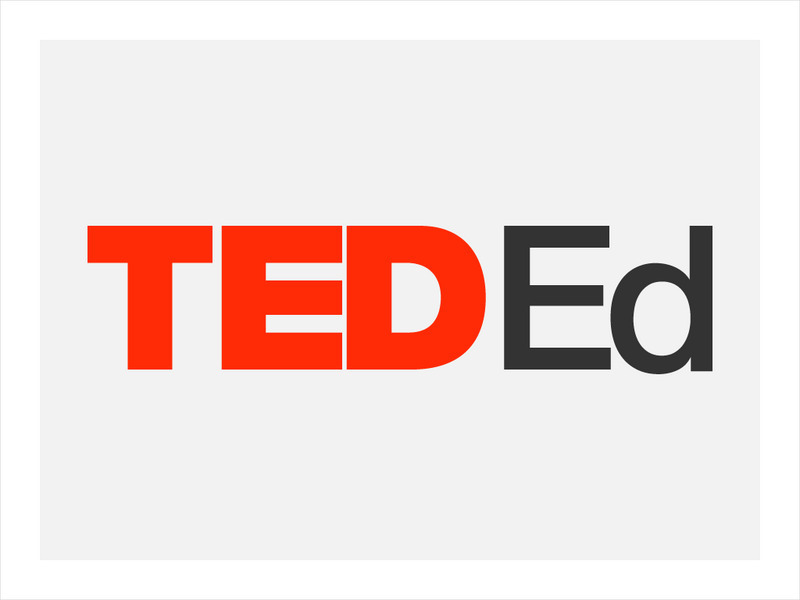

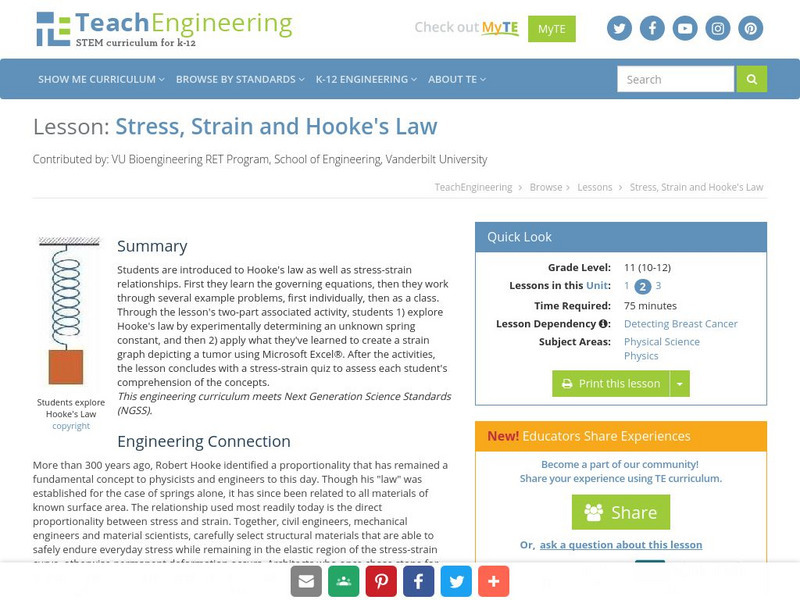
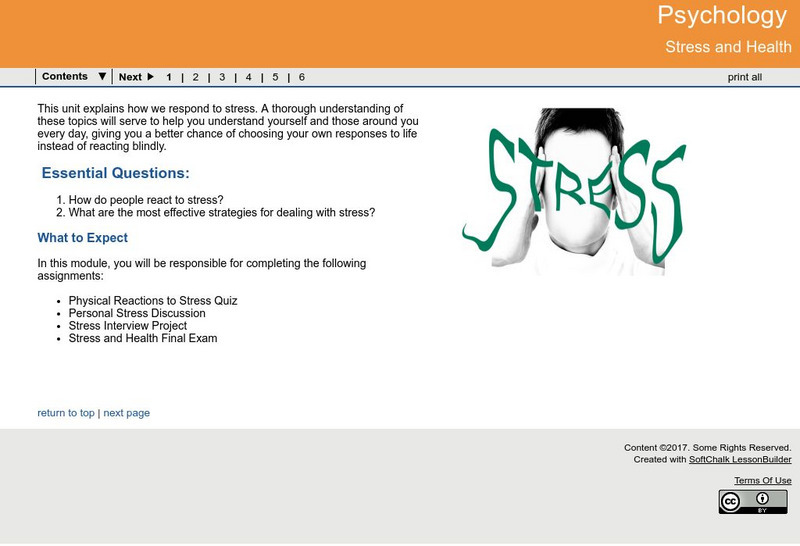
![Kids Health: Health Problems Series: Stress [Pdf] Lesson Plan Kids Health: Health Problems Series: Stress [Pdf] Lesson Plan](https://d15y2dacu3jp90.cloudfront.net/images/attachment_defaults/resource/large/FPO-knovation.png)


